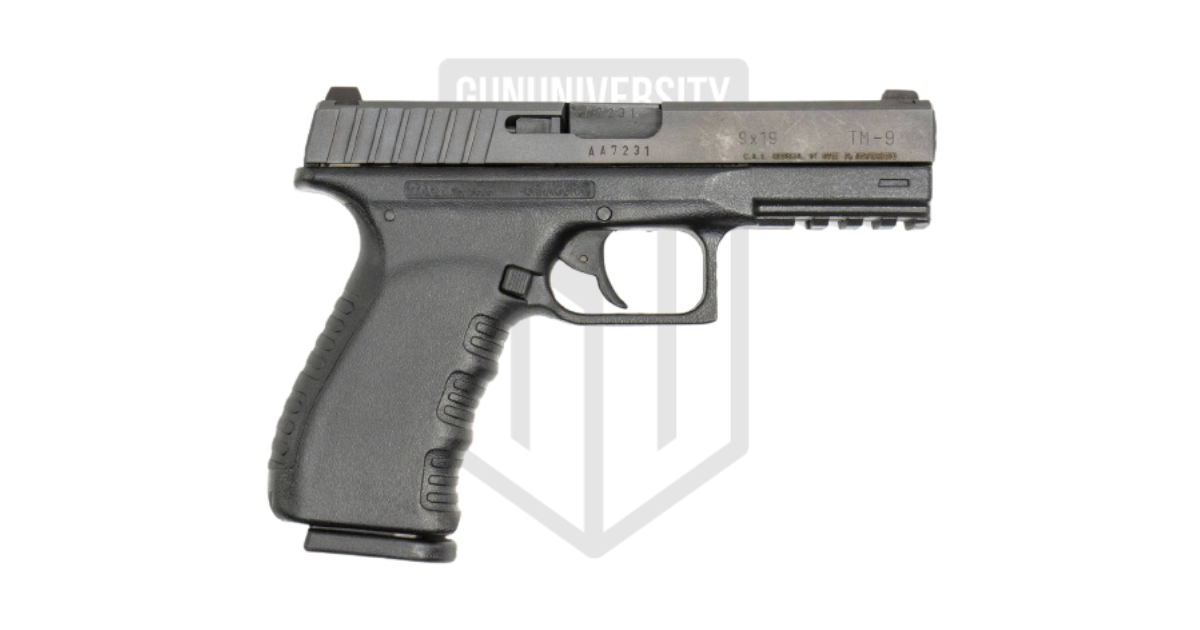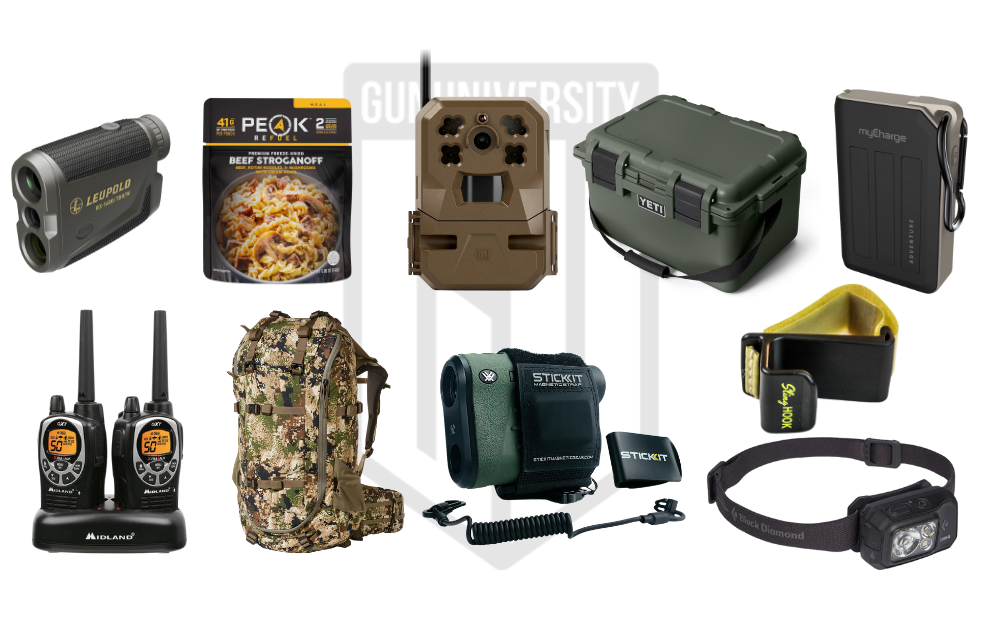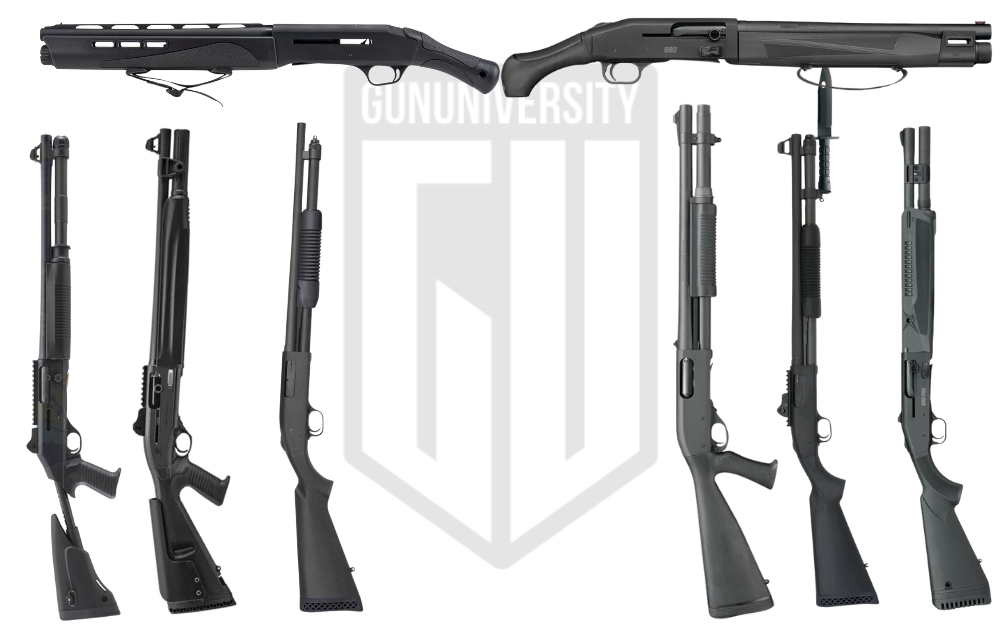.38 Special vs .380 ACP: Pocket Carry Comparison
Cartridges can share many similarities while being nearly opposites in every other way. Sometimes the names can even be remarkably similar. In the case of the .38 Special and .380 ACP, you can see the shared .38 caliber designation, but the .38 Special is designed for revolvers, and the .380 ACP is made for semi-automatic handguns. That’s where they differ, and while they might find themselves on radically different platforms, those platforms are more commonly used as pocket pistols.
The .38 Special and .380 ACP aren’t big shots in the police or military market, but they are massively popular for concealed carriers. When comparing the two cartridges, we are also intrinsically comparing revolvers and semi-automatic handguns. In the modern world, we are comparing modern concealed carry revolvers and automatics.
.38 Special vs .380 ACP Spec Comparison

.38 Special
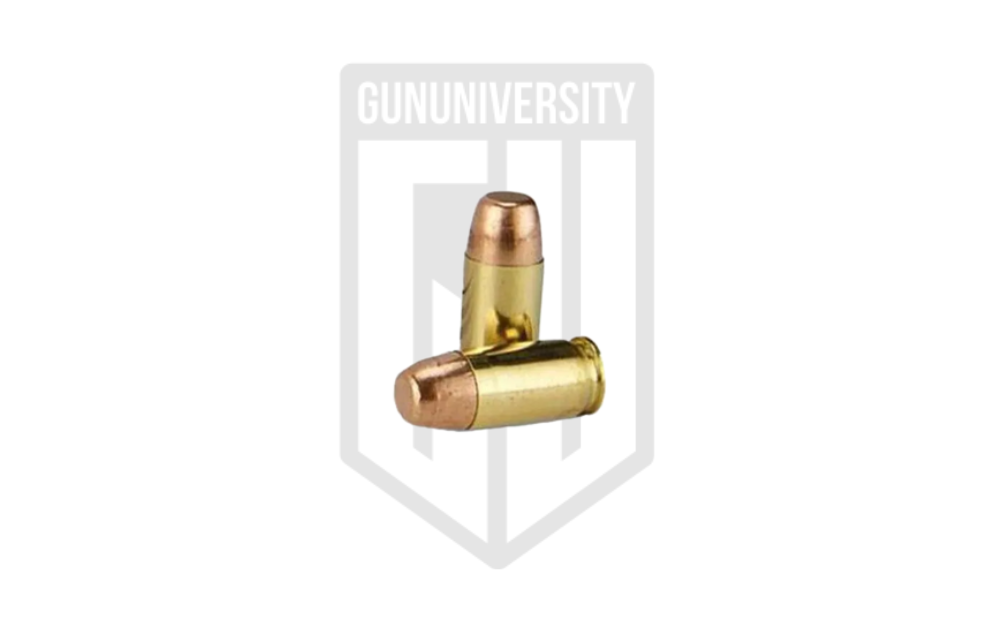
380 ACP
Why Compare .38 Special vs .380 ACP?
The .38 Special and .380 ACP have competed on the same ground in different spheres since their inception. In Europe, full-sized semi-automatic pistols in .380 like the Beretta M1934 and Walther PP were popular in police and law enforcement circles until the 1972 Munich Olympics Massacre caused police response teams to fully embrace 9mm handguns. Concurrently, the .38 Special service revolver, whether made by Colt or Smith & Wesson, was the ubiquitous duty handgun for the seven decades before the FBI’s Miami-Dade Shootout in 1986, which saw the law enforcement agencies and military security units transition from revolvers to 9mm semi-automatic pistols.
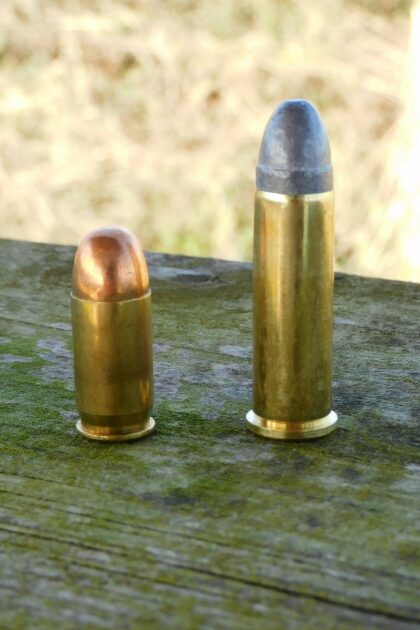
Today it would be peculiar to see a .38 Special revolver or a full-sized .380 in an officer’s duty belt, but both rounds continue to compete directly in the civilian concealed carry market as two of the largest pocket pistol calibers. The .38 Special snub nose revolver, featuring a small-frame and a barrel of two-inches or less, has been a popular item for undercover work and everyday carry for decades. The .380 was not particularly popular in the American market until the passage of shall-issue concealed carry permit laws in the United States in the late 1990s and early 2000s.
These legal changes encouraged manufacturers to develop small, polymer framed pistols that can be carried all day. The .380 ACP worked well in blow-back and small locked breech pistols and had a power premium over the 22 LR and 25 ACP cartridges normally encountered in handguns like these. If you want a pocket pistol that can fit into a pocket, chances are you are going to consider either the .38 Special or .380 ACP for your needs at some point.
The .38 Special History: An All-American Round
Although revolvers were the gun in Europe at the turn of the 20th century, the Americans had a different approach. For martial use, the US Army preferred .44 and .45 caliber revolvers, while the civilian market gravitated toward small .31 and .32 revolvers for everyday carry. The .38 (or .36 in black powder parlance) lived in both worlds. Rounds like the 38 Short and Long Colt had more power than small .32s, but were available in handguns that were easier to wield and carry than their bigger-bore counterparts.
The Colt 1851 Navy and its conversions served on both land and sea for decades before the Army adopted a modern double-action revolver in the Colt 1892 to replace its aging .45 caliber Colt Single Action Army. The Army adopted the new six-gun and chambered it with the 38 Long Colt cartridge to replace the revolver it had been using. Unfortunately, American servicemen tasked with pacifying the Philippines after the Spanish-American War complained that the 38 simply did not have the power to stop a determined close-range attack.
The US Army ultimately went back to the 45, but that did not stop Smith & Wesson from trying to sell their Military & Police revolver in a new 38 caliber cartridge—the 38 S&W Special. Developed in the backdrop of the Philippine-American War between 1899 and 1902, the 38 Special had a heavier 158 grain lead bullet and a longer case over the 38 Colt. The new round held twenty grains of black powder and could launch its bullet 150 feet per second faster.
Although the Army ultimately passed on the .38 Special as its primary service cartridge, the round’s development coincided with a drive of professionalization of armed law enforcement in America’s major cities. The .38 Special and mid-sized revolvers like the Smith & Wesson M&P and the Colt Official Police made for a package that was easy to shoot but a definite step up from shorter .32 and .38 caliber rounds that it replaced. The early 1990s marked the point where law enforcement stopped favoring the revolver and the .38 Special as a duty round. Where the .38 Special continues to thrive is in the realm of the small-framed snub-nosed revolver. In 1927, Colt released their Detective Special. It featured a 2-inch barrel, round-butt, and a six-shot capacity in .38 Special. Although it was the first .38 snubbie as we would know it today, it was not the last. Despite the decline of the revolver more generally, the snub-nosed .38 remains popular. There are plenty of new and old Colts and Smith & Wessons, as well as competitive offerings from Ruger, Taurus, and Charter Arms rounding out a platform that refuses to die.
.38 Special Pros and Cons
- Power Potential – The .38 Special uses heavier projectiles than the .380 ACP and the case has a generous powder capacity. On the whole, the .38 Special out of a four-inch barreled service revolver is going to be more powerful. The difference becomes narrower when using a 2-inch snub-nosed revolver. .38 Special defensive ammunition is also commonly found as +P ammunition that denotes higher pressure and higher velocity, while +P loadings are rare for .380 and may not work well in some pistols.
- 357 Compatible – The .357 Magnum cartridge came along in 1935 as a product improved .38 Special. It shares the same bullet diameter and case head. The case itself is slightly longer. If you happen upon a .357 Magnum revolver, it will happily chamber and fire the .38 Special cartridge.
- Expense – .38 Special revolvers require some fitting to produce and are more expensive than a comparable .380 pistol. Typical training .38 Special ammunition is also more expensive. However, defensive ammunition between both calibers can be similar in price.
- Case Capacity – The .38 has the advantage of additional case capacity to accommodate more powder for more power. But the .38 Special is generally loaded conservatively from the factory. The .38 Special was born as a black powder cartridge. Twenty-grains of black powder completely fill the case, but with smokeless powder, only a few grains are loaded. Thus, the .38 Special has a longer case than what is necessary today. The longer cartridge can help with loading but can be a liability when it comes to ejecting empty cases from the revolver. For its power level, the .380 ACP is more size-efficient.
Best Ammo for the .38 Special
Here are some of our favorite ammo deals for .38 Special.
Practice Ammo

Federal 38 Special 158 Gr LRN
- Soft shooting standard-pressure load
- Shoots to the fixed sights of most revolvers
Marketplace |
Cost Per Round |
| Target Sports USA | $0.56 |
| Gun.deals | $0.46 |
| Brownells | $0.56 |
| Gritr Sports | $0.60 |
Defensive Ammo
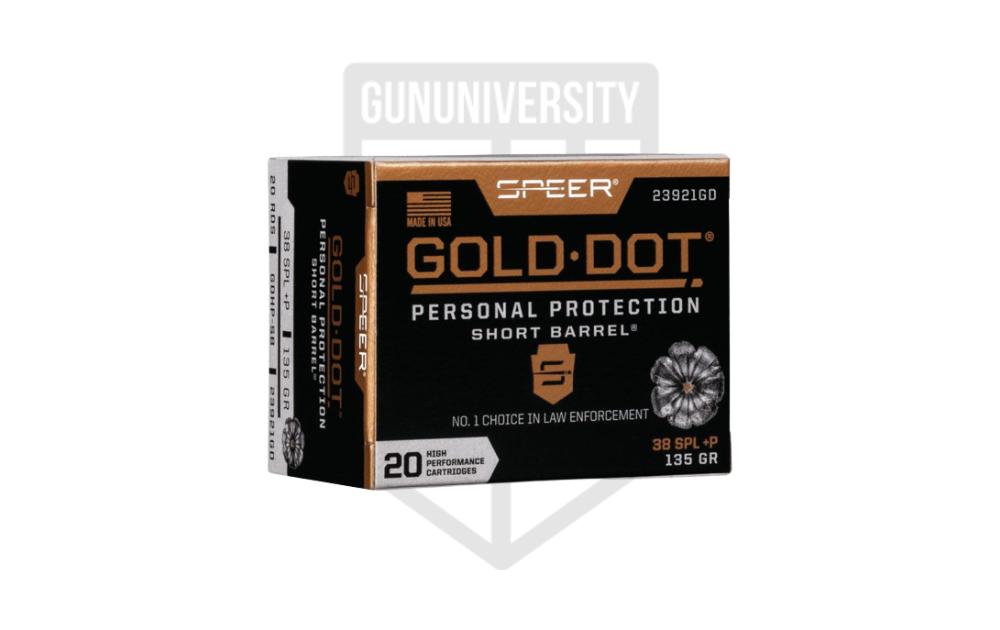
Speer Gold Dot 135 Gr +P
- Formulated for short-barreled revolvers
- Street-proven performance
- Rounded-profile projectiles for easy speed loader use
Marketplace |
Cost Per Round |
| Natchez | $1.75 |
| Target Sports USA | $1.60 |
| Palmetto State Armory | $1.75 |
The 380 ACP History: Unappreciated Until Now
I first came to learn about the 380 ACP in my first gun store gig in the 2000s. As a lover of revolvers and hunting rifles, the pocket pistol was something of a foreign concept to me, rarely seen and usually in 22 rimfire. But that decade saw the creation of small, polymer framed single-stack pistols designed for the concealed carry market like the Kel-Tec P3AT and the Ruger LCP—pistols chambered in, you guessed it, 380 ACP. It is a much bigger round than a 22 and it was now in pistols about the same size. And bigger is always better, right?
John Browning likely thought so when he designed the 380 ACP for the Colt 1908 Pocket model in…. 1908. Back in 1899, Browning designed the 32 ACP for his groundbreaking FN 1900 pistol. It was lightweight, slide operated, and could fire as fast as you could pull the trigger. Europeans were used to using .30 and .32 caliber revolver rounds in small handguns, so they readily accepted the 32 ACP as a service cartridge before World War I. The 380 ACP was Browning’s attempt to up the power factor in the existing 32 ACP pistol.
In the decades since, they offered the 32 ACP and 380 ACP in pistols of the same make and model like the Colt Pocket, the Beretta 1934-5, and the Walther PPK. That said, the 32 ACP remained the outsized favorite. Aside from sparse commercial sales and official military adoption by Fascist Italy and Romania in time for the Second World War, the 380 never caught on in Europe. Neither the 32 nor 380 did particularly well in the United States until the proliferation of shall-issue concealed carry laws in the 1990s. Finaly, then the 380 get a fair shake. Handguns like the Ruger LCP and the Kel-Tec P3AT have come to serve as inexpensive, lightweight protection for both men and women, taking it upon themselves to conceal carry for personal protection.
380 ACP Pros and Cons
- Economy – Although some larger-framed .380 pistols can command a premium, a typical pocket pistol like the Ruger LCP or the S&W Bodyguard can be had at nearly half the price of a quality .38 Special revolver. The 380’s popularity also translates to lower ammunition prices, particularly for training ammunition.
- Capacity – Most compact .38 Special revolvers are going to hold five or six rounds in the cylinder. Most .380 pocket pistols are going to hold seven rounds, six in the magazine and one in the chamber. Some newer pocket pistols like the Ruger LCP Max and Sig Sauer 365 .380 pushes the capacity to ten rounds with standard capacity magazines.
- Light Projectiles – Most .380 ACP loads will use a 85-100 grain projectile pushed between 750-1000 feet per second. The .38 Special has more velocity potential with heavier and deeper-penetrating 110-158 grain projectiles.
- Pistol Reliability – A large-framed .380 pistol can be very reliable, but the formula for the .380 becomes more complicated the smaller the pistol becomes. We know 380 pocket pistols for being finicky with some ammunition, as well as how you hold the pistol in hand. These are a non-issue with the revolver platform in general.
Best Ammo for the 380 ACP
Practice Ammo
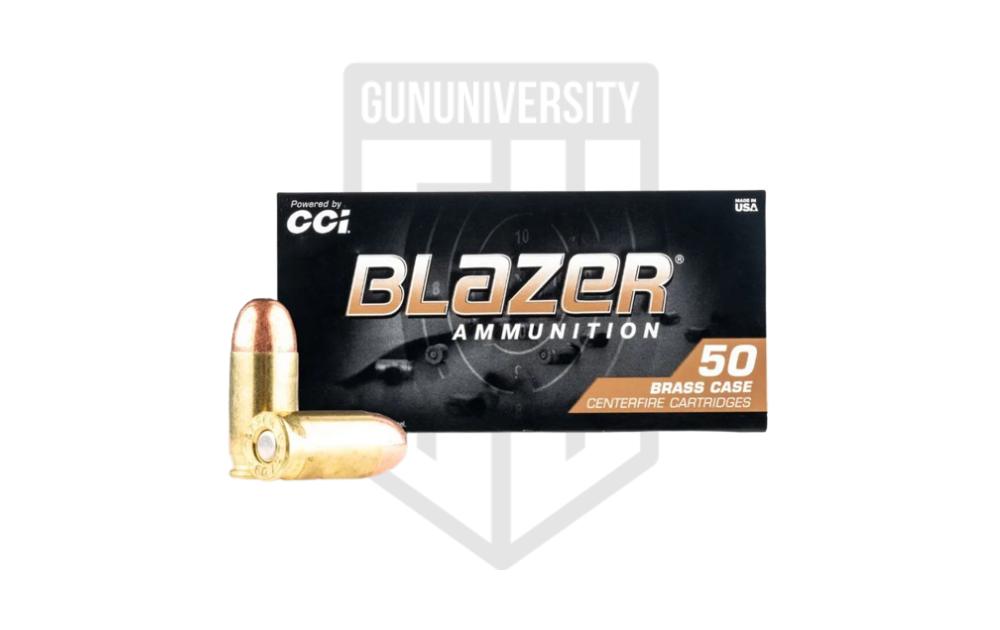
CCI Blaser 380 ACP 95 Gr FMJ
- Inexpensive
- Brass-cased
Marketplace |
Cost Per Round |
| Gun.deals | $0.34 |
| Target Sports USA | $0.375 |
| Palmetto State Armory | $0.44 |
Defensive Ammo
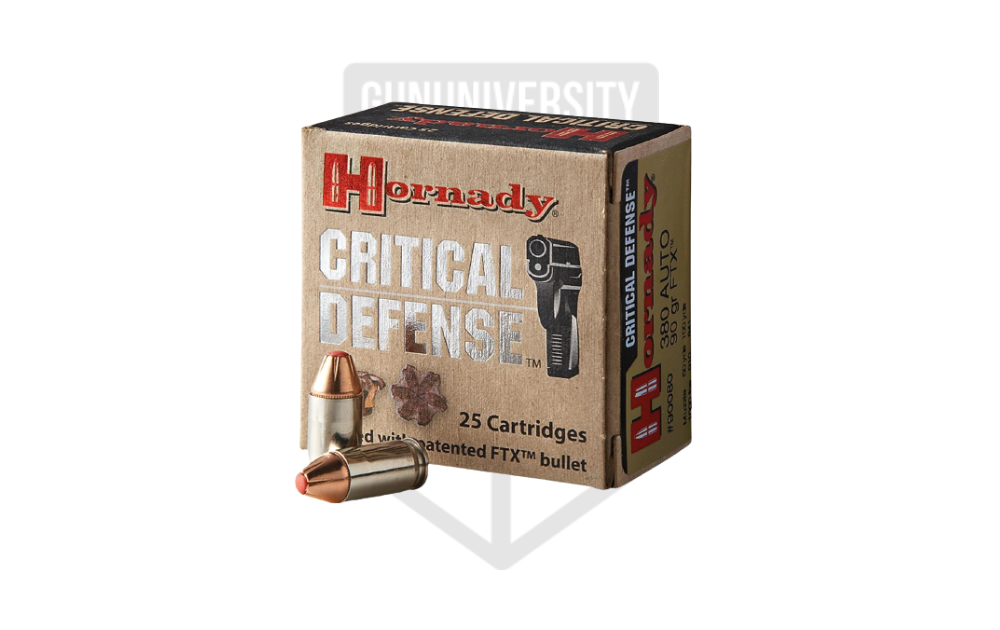
Hornady Critical Defense 380 ACP 90 Gr FTX
- FTX hollow-point retards cloth-clogging
- Excellent expansion and upwards of 15 inches of penetration in ballistic gelatin
Marketplace |
Cost Per Round |
| Gun.deals | $0.80 |
| Gritr Sports | $0.86 |
| Target Sports USA | $0.88 |
.38 Special vs .380 ACP Comparison
The .38 Special and .380 ACP cartridges exist in both the world of duty pistols and concealed carry pocket pistols. In the former category, the .38 Special gets the nod for power while the .380 gets some capacity. But it is the latter category that matters to most of us. Even in their roles as carry cartridges, the general rule still applies, but we blur it at times.
.38 Special
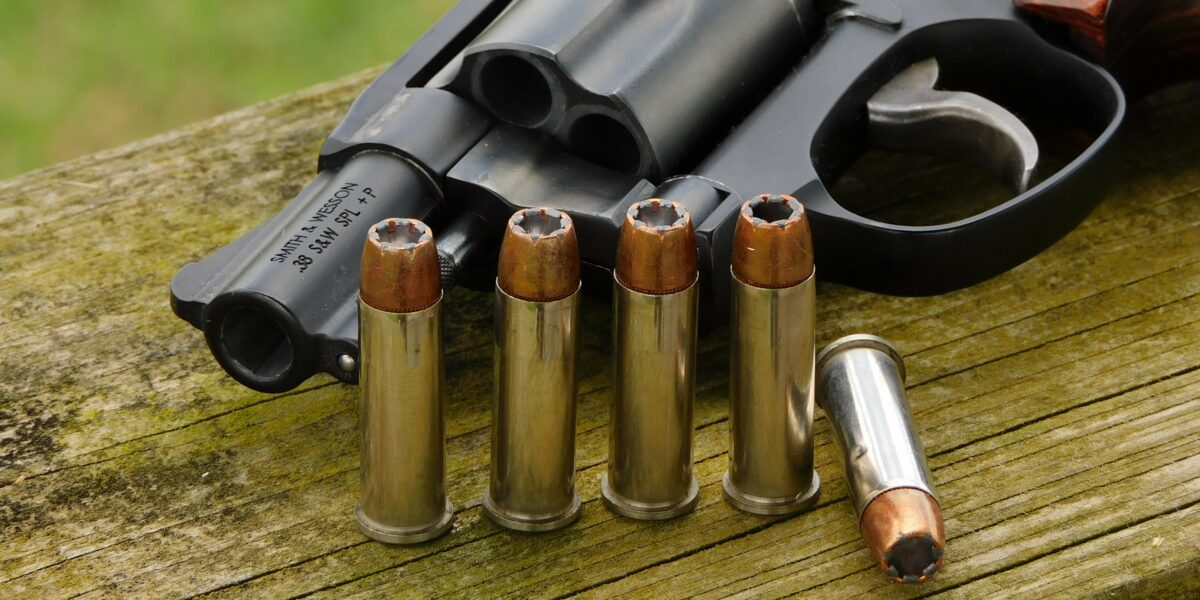
The .38 Special was a trusted round in pocket guns well before the .380 ACP made headway. The archetypical carry gun in this caliber will be revolvers like the snub-nose type, those with barrel lengths of about two-inches in length. Going from a typical all-steel four-inch barreled service revolver to a light-weight two-inch model will amplify portability, but what you get in exchange is extra recoil, blast, and less power with most given loads. Although some loads are certainly better than others, the .38 Special can struggle at low velocities with ammunition generally intended for service revolvers.
One of my personal favorite loads is the Speer Gold Dot +P 135 grain jacketed-hollow point. Out of a Smith & Wesson Model 10 with a 4-inch heavy barrel, that load is running just south of 1000 feet per second and is easy to manage. Hollow-point expansion is excellent and penetration in 10% ordinance gelatin is about fourteen inches. That same load fired from a snub-nosed Smith & Wesson Model 442 is unpleasant to shoot and measures on my Caldwell Chronograph at 889 feet per second. Hollow-point expansion is less, but the round pays off with a few extra inches of expansion.
The Hornady Critical Defense 110 grain +P and Federal Nyclad 125 grain +P loads are somewhat faster and give good penetration and expansion in the same medium. But not all +P loads are created equally. For years, the FBI trusted the Federal 158 grain +P semi-wadcutter hollow-point. This simple lead slug is deceptively effective out of a service revolver, but when paired with a snubby, these slugs are going slow enough that expansion is minimum. Most standard pressure loads will not open up at all, but give good penetration. Even the lowly Federal 158 grain lead round nosed bullet at a paltry 708 feet per second out of my 442 can penetrate to the twenty-six inch mark.
.380 ACP
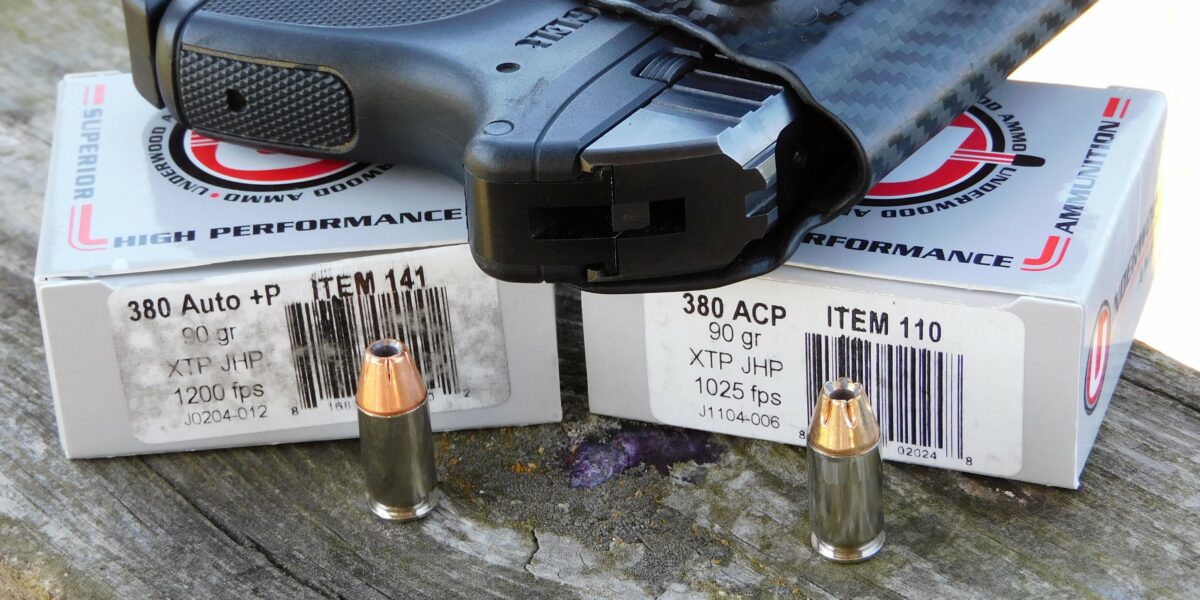
Ammunition selection is also vital in the .380 ACP cartridge. Conventional wisdom dictated for years that small-caliber pistols like .380 should be employed with full-metal jacket ammunition, given that hollow-points performed poorly—not to mention some guns simply were not designed to feed hollow-point ammunition. This sentiment holds true to a much lesser extent now. Boutique companies like Underwood, Buffalo Bore, and Barnes, as well as main-line manufacturers like Federal and Hornady, have invested heavily in .380 ACP hollow-point technology.
Still, the .380 ACP can be a mixed bag when you are reduced to a pocket pistol. I have tested most types of available 380 ACP loads using a Ruger LCP with a 2 ¾ inch barrel and the results are nothing short of various. Most 85-95 grain loads from Hornady American Gunner, Federal Punch, and Speer Gold Dot run between 880 and 940 feet per second. These loads penetrate between 15-18 inches in gelatin, but heavy clothing effectively clogged the hollow-point cavities. However, the .380 has an interesting tumbling characteristic that allows these rounds to do damage, even without expansion, where only the heaviest boutique loads for the 38 Special tend to tumble.
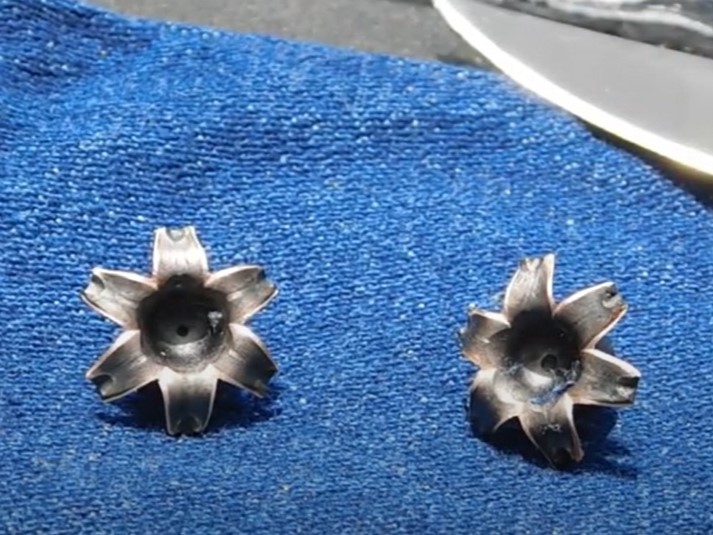
Other hollow-point loads like the Barnes Tac XPD 80 grain load expand beautifully, but achieve shallow penetration depths of eight inches or less. The best hollow-point load I have yet to encounter is the Hornady Critical Defense 90 grain FTX load, which gives excellent penetration and consistent expansion, both in pocket guns like my LCP and in larger pistols as well. In bare gelatin tests, most loads I have tested open up, dumping their energy, and ending their journey between eight and ten inches of penetration.
In any test that I would consider fair, the .38 Special holds a slight edge. Although, on paper, standard pressure .38 Special loads have similar muzzle energy levels to the .380 ACP, roughly 180 foot pounds of energy. While a few firms like Underwood and Buffalo Bore produce +P loads that encroach on the .38, those same companies hotrod their .38s even hotter. But raw power is not the only consideration. The .380 excels in some areas, while the .38 does so in others.
Interested in mounting a suppressor on your pistol? Excellent. Both rounds tend to be subsonic and easy to suppress, but the .38 Special revolver has a cylinder gap that makes effective suppression impossible. If you happen on a threaded barrel for your pocket .380, just thread on a 9mm can and you can shoot quietly.
There is also the issue of shootability of the pistol of your choice. Leaving aside the particular advantages or disadvantages of the pocket revolver over the pocket auto, the .38 Special and .380 give different feedback to the user. On the surface, the moving barrel, recoil spring, and slide of a typical .380 can help mitigate recoil. In practice, I found the .38 Special to be the more controllable of the two rounds. On a typical hammerless .38 like my 442, I can get a high grip on the pistol and keep the recoil under control. The higher mounting of the slide and barrel of my LCP in relation to my hand causes more muzzle flip. The .38 revolver also offers some forgiveness in ammunition selection. If a good +P defensive load is too snappy, you can opt for a light 148 grain wadcutter load that is both easy to shoot and effective. The .380 pistol needs ammunition at a certain velocity to cycle.
Our Take
In many ways, the .38 Special and .380 ACP are generational rivals. Yet the .380 appears to be the new and up-and-coming round given all the new pistols made for it, while the .38 Special revolver is refinement of something old. All the same, today’s .380 rounds and the pistols that chamber it are not what the likes of James Bond and Mark Twain carried. The .380 ACP has come a long way in terms of ammunition and pistol development. There are some ammunition that is downright excellent and pistols that range from wallet-sized options like the Ruger LCP to mid-size fighting pistols like the Smith & Wesson Shield EZ.
To a lesser extent, the .38 Special has also been rehabilitated. New loads join old and although the heyday of the revolver as a duty gun has passed, more firms are producing them than ever before. People still buy small revolvers and I am one of them. I started shooting .38 Special revolvers starting with duty sized handguns before stepping down to snubbies and learning the art to shooting them. Later, I bumped into the .380 and learned my way around the round and the pistols chambered for it.
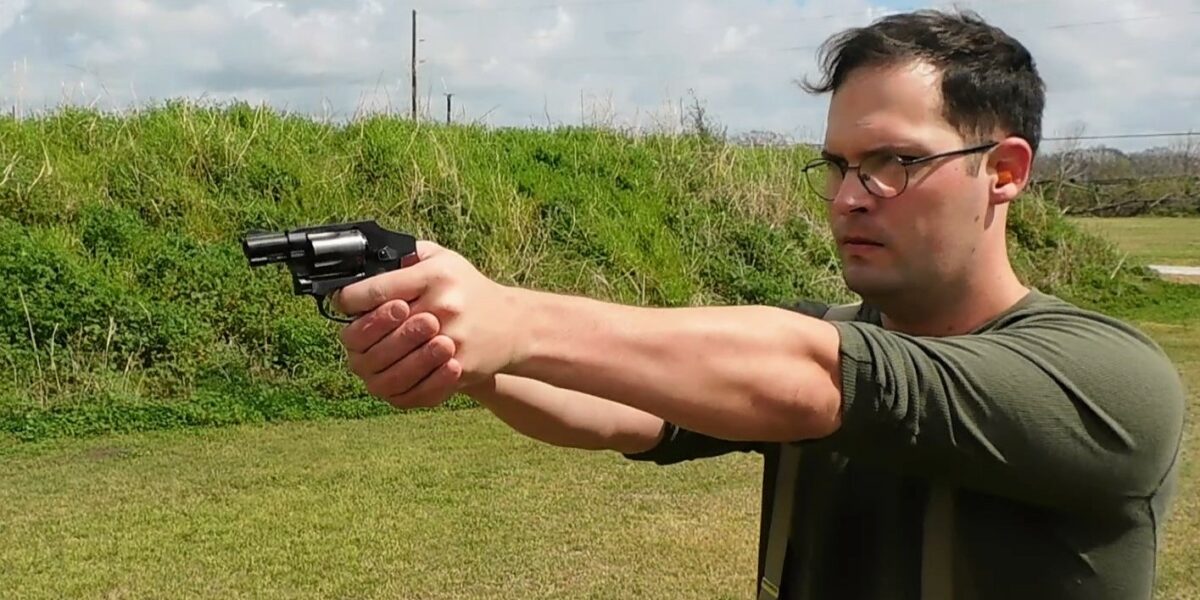
From a shooting and carry perspective, the .380 is probably the easiest way to carry in the pocket because of the thin profile of pistols chambered in the round. Some .380 rounds are exceptional, as are some pistols, but I have always felt that the .38 Special offered just a little more. For pocket carry, a five-shot snub-nose like my Smith & Wesson 442 is slightly larger in the pocket, but the cylinder breaks up the visible outline of a gun. In terms of ammunition selection, there are more options for workable defensive hollow-points and hard cast outdoorsman loads with the .38 Special, while finding an appropriate .380 load can be hit or miss. There are inherent disadvantages to going with the .38 Special. You are stuck with a revolver, along with its lower capacity and slower reload times. But I firmly believe my first and second rounds are going to be more consequential than my fifth, as, in my experience, small revolvers tend to be less problematic than small auto pistols. The smaller the pistol, the more care needs to be taken with ammunition selection and getting a proper grip—not to mention that pocket pistols are more prone to factory defects than larger, service sized handguns. The .38 Special revolver, on the other hand, is merely a smaller version of an existing design that offers forgiveness should you need to use one.
Check out our Best Pocket Pistol article to learn about our favorite small framed handguns.
Picking the Right Rounds
Since we’ve dug into the two cartridges about as deep as we can, let’s give you a few suggestions for carrying both cartridges. Since these rounds tend to be used for defensive shooting, we are going to focus on the right defensive rounds based on the gun you’re using. Barrel length has a distinct effect on how a projectile performs. Some rounds perform better than others, depending on the barrel length.
The .38 Special
The .38 Special has been around a very long time, and it comes in a variety of configurations. While most defensive shooters are going to be carrying a sub-nose, we’ll cover a variety of different-sized .38 Specials.
The Snub Nose
If you’re using a snub revolver, which is typically a gun with a barrel around two inches to 1.87 inches, you have to be ammo picky. Most defensive ammunition is jacketed hollow points. A lot of modern defensive cartridges and projectiles are designed to reach a particular velocity before those hollow points expand. From a short barrel, those rounds can’t reach that velocity.
What we end up with is a cartridge that goes too slow to expand, but the hollow point creates excessive drag that slows the projectile down. This leads to less than optimal penetration. With a short barrel and a lack of velocity, the projectile that tends to work best will be a solid projectile, but your traditional FMJ.
A heavy wadcutter works best. It allows for excellent penetration. Penetration is vital to reach the vitals. A 148-grain wadcutter is a great option, and my personal favorite is the 148-grain hollow base wadcutter from High Desert Cartridge Company.
Medium-Sized Revolvers
If we are getting into the three to four-inch realm of .38 Special revolvers, we have more options for defensive ammunition, specifically more traditional defensive ammo. The longer barrel gives us more velocity and opens us up to jacketed hollow points. Jacketed hollow points expand when they strike a soft target.
This expansion creates a bigger bullet, and a bigger bullet means a bigger wound tract. Additionally, the jacketed hollow point will slow the projectile down and prevent overpenetration. This adds a layer of safety to using your defensive firearm. Fast, lighter bullets can offer excellent penetration with great expansion.
One of my favorites is the 125-grain Speer Gold Dot rounds. They tend to be excellent performers from medium-length barrels and offer excellent expansion and penetration. Plus, they are reliable and dependable.
The .380 ACP
The .380 ACP can be a very capable cartridge, but we have to mix the right ammo with the right gun, just like the .38 Special.
The Pocket Pistols
Guns like the Luger LCP and S&W Bodyguard series are known for being extremely compact with super short barrels. Much like a snub nose revolver, a pocket pistol, these super short barrels can create problems with jacketed hollow points. This leads to a lot of shooters relying on FMJs when it comes to defensive shooting.
FMJs can be an acceptable option, but the mass popularity of the .380 ACP has led to some cartridges that perform quite well from pocket pistols. You have to be ammo-picky. If you want a jacketed hollow point that both expands and offers excellent penetration, the Federal Hydra-Shok is a great way to go. This 99-grain round goes deep and gets big!
Medium-Sized Pistols
Medium-sized .380s tend to come down to guns like the Walther PPK or maybe the Glock 25. These offer a bit more barrel, and alongside a bit more barrel, we get great velocity and capability. We don’t have to be nearly as ammo picky and can stick with the Federal Hydra-Shok deep or lean into nearly any basic JHP round for the .380 ACP.
If you’re using a larger-than-average .380 ACP, it’s likely due to recoil issues. Federal makes a reduced-recoil, 90-grain Hydra-Shok load that can give excellent performance with lower-than-average recoil. In a medium-sized .380 ACP, you have tons of options for ammo.
Recent Posts
November 29, 2025
November 25, 2025
November 22, 2025
November 21, 2025

